| Our COMMUNITY | ||||||||||||||||||
| ||||||||||||||||||
Matawan Timeline
Published in the Asbury Park Press 12/21/00
May, 1778 Burrowes Mansion skirmish takes place in the part of Raritan that would later become Matawan. The mansion is the home of grain merchant John "Corn King" Burrowes Jr. The mansion at 94 Main St. today is the home of the Matawan Historical Society.
1795 Poet Philip Freneau begins publishing the New Jersey Chronicle, believed to be the first newspaper in Monmouth County. He also issues a volume of his poems this year.
From the 1820's to the 1870's Middletown Point saw a building boom when property owners began subdividing their land. Streets were opened and new homes were built. Midway Alley, now Jackson Street, was opened in 1821 from Ravine Drive to Church Street. In 1833, Wycoff and Spring Streets were opened.
In1834 The Little-Terhune House is built at Ravine Drive and Main Street. It is torn down in the 1960s for the construction of a bank building.
In the 1840's Washington, Monroe, Franklin, Part of Jackson, Little, North, South, and Mill Streets were opened along with Rabbit Lane and Steamboat Alley. Broad Street, which used to be known as Second Street, was opened between Church and South Streets as well as a short piece off Little Street. By 1852 it was extended from Little to South Street and had been renamed Broad Street. The 1850's also saw the opening of Orchard, Center, Stillwell (then Division) and High Streets and Park Ave (then New St.) In the 1860's Clinton and Atlantic Streets were opened, as well as Hoyt Street and Johnson Avenue.
1857- Matawan Township, then known as Matavan, is carved out of Raritan. The area contains what today are Matawan and Aberdeen. The name Matawan was taken from Matawan Creek.
1869 David Bell begins publishing The Matawan Journal monthly newspaper. It changes to a bi-weekly in 1870 and later becomes a weekly.
After the Civil War it became apparent that the residents and businesses of Middletown Point required a level of services that Matawan Township had neither the ability nor the authority to provide. In 1866 , an act of the state legislature created a special assessment district for the maintenance of Main Street. This was soon to be found inadequate and citizens began agitating for incorporation as a borough. This sentiment was far from unanimous as was found out on March 20,1883, when a referendum to form the Borough of Matawan was defeated, 93-79.
This disappointment did not discourage supporters of the borough, and on March 17, 1885 the question was resubmitted to the voters. This time it was passed by a vote of 144-133. The Borough of Matwan was born. This was a very limited form of government, with most of its authority being for public works and health. The Borough was organized within the township, with the township retaining authority over assessments, tax collection, and police related matters. The Borough tax was a line item on residents tax bills, which were paid to the township. The township would then pay the amount of the Borough tax to the Borough treasurer.
The first election for Borough officials was held on April 7, 1885 when a seven member Borough Commission was elected. The next day, the Commission organized by selecting Edward I. Brown as President. This position is now known as Mayor. Edward I. Brown was the first Mayor of Matawan Borough. Other early Mayors were David G. Ryer, John F. Lisk, John P. Applegate and David E. Van Wickle.
Public support for the borough was still not unanimous, and borough elections sometimes saw anti-incorporation or no Borough candidates running.
The Borough did not have the authority to support the two fire companies. Washington Engine Company 1 and Matawan Hook and Ladder Company 1 so in 1886 the township committee (at the urging of Thomas L. Petersen) created a Fire District within the Borough boundary.
1889 A small group of Baptists begins meeting in homes in Matawan. On Nov. 12, 1890, they officially organize as the Berean Baptist Church. The name is changed to Second Baptist Church of Matawan in 1893. The cornerstone of the Orchard Street church is laid in 1913, and property is purchased on either side of the church in 1920.
1895 Matawan separates from Matawan Township. In 1977, Matawan Township changes its name to Aberdeen.
In November 1895 the State Supreme Court found the Borough Commission form of government of questionable constitutionality. As this placed all municipalities operating under this form of government into doubt, in April 1896 the State Legislature repeated the Borough Commission Act and re-incorporated all Boroughs under the Borough Act of 1878, with a separately elected Mayor and a six member council.
Jan. 27, 1901 The most disastrous fire in Matawan's history destroys a block of six buildings, the major part of the business district.
July 1916 Five shark attacks, four of them fatal, take place in a period of 12 days, in Monmouth and Ocean counties. The attacks culminate in an incident some 11 miles from the ocean in placid Matawan Creek, where a 10-year-old boy and would-be rescuer are killed.
1924 Matawan High School is built, at a cost of $175,000, and located at Broad and South streets.
1929 The Phyllis Wheatley Club, an organization for black women, is formed with 23 members.
1938 The post office at 155 Main St. is built. In April 1974, plans for its renovation and expansion are announced.
March 4, 1954 The Matawan First Aid and Rescue Squad starts with $150 capital and a 1931 LaSalle ambulance. Members purchase supplies with their own money.
1970 Matawan United Methodist Church and the adjoining John Terhune House at 147 Main St. are torn down to make way for the expansion of the post office and construction of a parking lot and a commercial building.
June 26, 1988 Ceronics Inc., Main Street, a manufacturing plant that processes ceramic paints, is destroyed by fire.
September 1988 Matawan celebrates its 300th anniversary with various activities, including a parade and food fair.
July 1988 Dell's Meat Market on Church Street closes. The 82-year old store, operated by Frank Dell and brother Paul, was opened by their father, Frank A. Dell, in 1906. The whole family -- Frank; Paul; their mom, Frances; and a sister, also named Frances -- helped run the store. Frank A. Dell died in 1942.
August 1988 The Rose Hill Cemetery, Ravine Drive, Matawan is restored, thanks to the efforts of Helen Dolan and Susanne Miller. The cemetery crowns the borough's highest hill with graves and monuments recording some of the oldest names in the area's history. The cemetery was formally established in 1858 by the Fountain and Bushnell families, but gravestones have been found dating to 1802.
1993 Foodtown closes.
July 29, 2000 Hoboken-based MovieGuy Productions comes to town to shoot a short film, "Going, Going, Gone."
-- Compiled by the Press newsroom library staff
from the Asbury Park Press Published: December 21, 2000
-
2023 Historical Sites Mtg Calendar (pdf) -
New York Times Feature about Matawan Borough (pdf) -
Matawan Historical Society to Host Victorian Tea Party -
Pictures of Historic Houses -
Old Matawan -
Matawan Shark Attacks
















